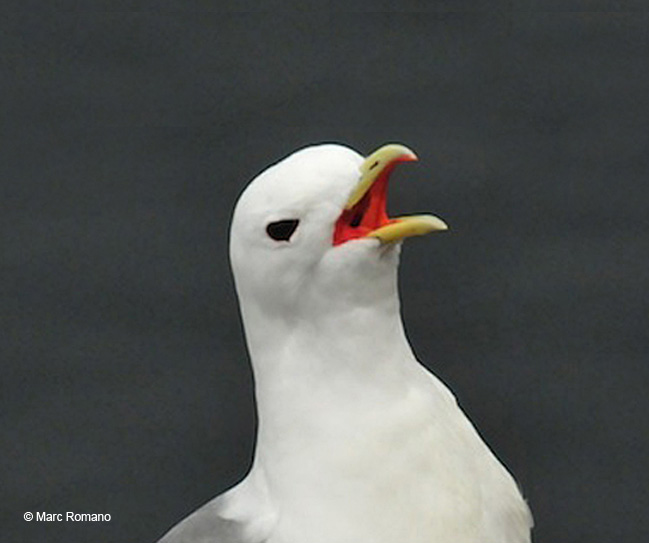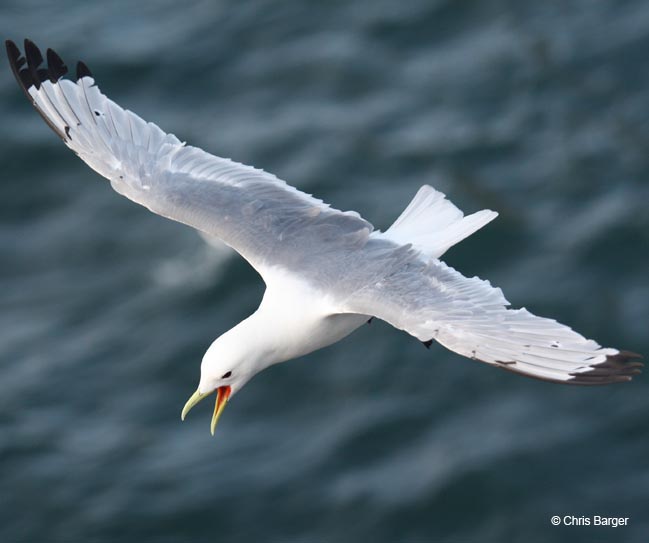The Pribilof Islands are an important site for many seabird species, including 70% of the world’s red-legged kittiwake population. The Refuge’s annual seabird monitoring program provides essential information about population size and how many chicks are raised each summer. Other researchers come to the islands to try to answer more complex questions, often trying to figure out why there is a change in population size over the years or why parents may be able to raise a chick in one year and none the next.
A group of researchers has just got funding for a three-year project to study red-legged kittiwakes on St. George Island. The Seabird Youth Network is going to follow the progress of this project from the planning stage (now) through to the fun figure-out-what-all-the-data-is-telling-us stage. We’ll post regular updates on the blog, and you’ll be able to click on “kittiwake behavior” in the blog search list to find all posts on this study.
The basic outline for the study is:
The amount of food available to breeding seabirds often differs between years. Food availability can be influenced by lots of things, including the number or size of the prey (fish or zooplankton), or where the prey are located.
The research team is interested in finding out:
1) How food availability effects the foraging (feeding) behaviour of the red-legged kittiwakes (where they go to find food).
2) How food availability effects the ability of red-legged kittiwake parents to incubate an egg and raise a chick during the summer breeding season (breeding success).
3) If breeding success influences where birds travel to spend their winter.
Field-work on St. George Island will start in May, and over the next few months we’ll be learning:
1) Who the research team are, and who is paying for the study.
2) What is already known about red-legged kittiwakes.
3) How the team plans to find out the above information.
4) What goes into planning a field season on St. George.
Some initial questions for YOU:
1) There are two species of kittiwakes on the Pribilof Islands. This study focuses on the red-legged kittiwake, what is the other species (shown in the photo above)?
2) Where do red-legged kittiwakes build their nest?
3) Think back to Seabird Camp: how do Refuge biologists monitor the population size of kittiwakes?


